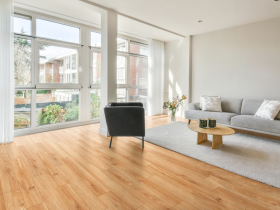Creating a private oasis in your backyard can significantly enhance your outdoor living experience. Whether you want to enjoy a peaceful retreat or create a secluded area for entertaining guests, DIY privacy screens offer an affordable and stylish solution. This article will explore creative ideas for building your own privacy screen, transforming your backyard into a serene sanctuary.
1. The Benefits of DIY Privacy Screens
Privacy screens provide a multitude of benefits for your backyard. They offer seclusion, reduce noise, block unsightly views, and can even add a decorative element to your outdoor space. DIY privacy screens are particularly advantageous as they allow you to customize the design, materials, and size to fit your specific needs and aesthetic preferences.
2. Choosing the Right Materials
Selecting the appropriate materials for your privacy screen is crucial. The choice of materials will impact the durability, appearance, and overall effectiveness of your screen. Here are some popular options:
Wood
Wood is a classic and versatile material for privacy screens. It can be painted or stained to match your outdoor decor. Cedar, redwood, and pressure-treated lumber are excellent choices due to their resistance to rot and insects.
Bamboo
Bamboo is a sustainable and eco-friendly option that provides a natural and tropical look. It’s lightweight yet sturdy, making it easy to install and maintain.
Metal
Metal screens, such as aluminum or steel, offer a modern and industrial aesthetic. They are highly durable and can be customized with intricate laser-cut designs for added visual interest.
Fabric
For a softer and more flexible option, consider using outdoor fabric. Fabric screens can be hung like curtains and easily removed or changed to suit different seasons or occasions.
3. Creative DIY Privacy Screen Ideas
Here are some innovative and practical ideas for DIY privacy screens that can elevate your backyard retreat:
1. Lattice Panels
Lattice panels are a simple yet effective way to create a privacy screen. They provide partial coverage while allowing air and light to pass through. You can enhance the lattice by growing climbing plants like ivy, jasmine, or wisteria to add greenery and natural beauty.
2. Repurposed Shutters
Old wooden shutters can be repurposed into charming privacy screens. Attach them vertically or horizontally to a frame and secure them in place. You can paint them in vibrant colors for a playful touch or leave them in their rustic state for a vintage look.
3. Pallet Walls
Wooden pallets are an affordable and sustainable option for building a privacy screen. Stack and secure the pallets together to create a solid wall. You can leave them as is or paint them to match your outdoor decor. Add potted plants or hanging planters for an added touch of greenery.
4. Vertical Gardens
Combine privacy with a lush, green backdrop by creating a vertical garden screen. Use a sturdy frame and attach planters or pockets for growing a variety of plants. This not only provides privacy but also enhances the aesthetic appeal of your backyard.
5. Outdoor Curtains
Outdoor curtains are a versatile and elegant solution for privacy. Install a curtain rod or wire across your patio or pergola and hang weather-resistant curtains. Choose from a variety of colors and patterns to match your style. Curtains can be easily opened or closed to adjust the level of privacy.
6. Metal Panels
For a contemporary and artistic look, consider using metal panels with intricate cut-out designs. These panels can be freestanding or mounted to a frame. The designs can cast beautiful shadows and create a unique ambiance in your outdoor space.
4. Installation Tips and Tricks
To ensure your DIY privacy screen is sturdy and effective, consider the following installation tips:
- Measure Carefully: Before starting your project, measure the area where you plan to install the privacy screen to ensure a perfect fit.
- Use Proper Tools: Make sure you have the right tools for the job, including a saw, drill, screws, and a level.
- Secure the Base: If your screen is freestanding, ensure the base is secure and stable. You can anchor it with concrete or heavy planters for added stability.
- Consider Wind and Weather: Choose materials that can withstand the elements, especially if you live in an area with harsh weather conditions. Regular maintenance, such as sealing wood or treating metal for rust, can prolong the life of your privacy screen.
5. Enhancing Your Privacy Screen
Once your privacy screen is installed, you can further enhance its appearance and functionality:
- Lighting: Add outdoor string lights, lanterns, or solar lights to create a cozy and inviting atmosphere.
- Decorative Elements: Hang outdoor art, mirrors, or decorative panels to personalize your screen.
- Additional Seating: Create a comfortable seating area near your privacy screen with outdoor furniture, cushions, and throws for a relaxing retreat.
Conclusion
DIY privacy screens are a fantastic way to create a secluded and stylish backyard retreat. By choosing the right materials and exploring creative design ideas, you can transform your outdoor space into a private oasis. Whether you prefer the natural look of wood and bamboo, the modern appeal of metal, or the versatility of fabric and curtains, there is a DIY privacy screen solution to suit your needs. With careful planning and a little creativity, you can enjoy a peaceful and beautiful backyard retreat all year round.
















Leave a Reply